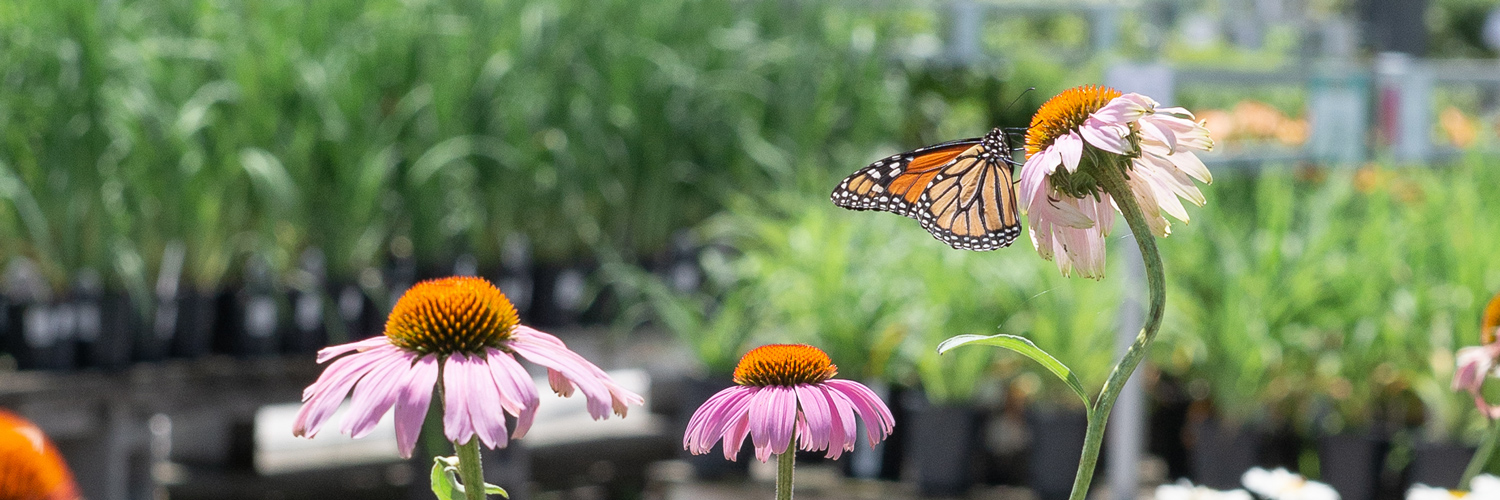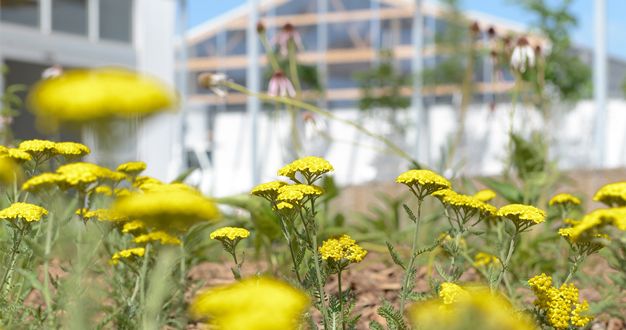
Colorful butterflies flitting from bloom to bloom can really bring a garden to life. But sadly, populations of many of these charismatic pollinators are in decline as pressures from habitat loss and climate change mount. To help turn that trend around, we invite you to create a butterfly oasis in your garden that includes all the resources these favorite garden visitors need to thrive now and for future generations. Here we share about the types of plants and other garden components that can best support a healthy community of butterflies.
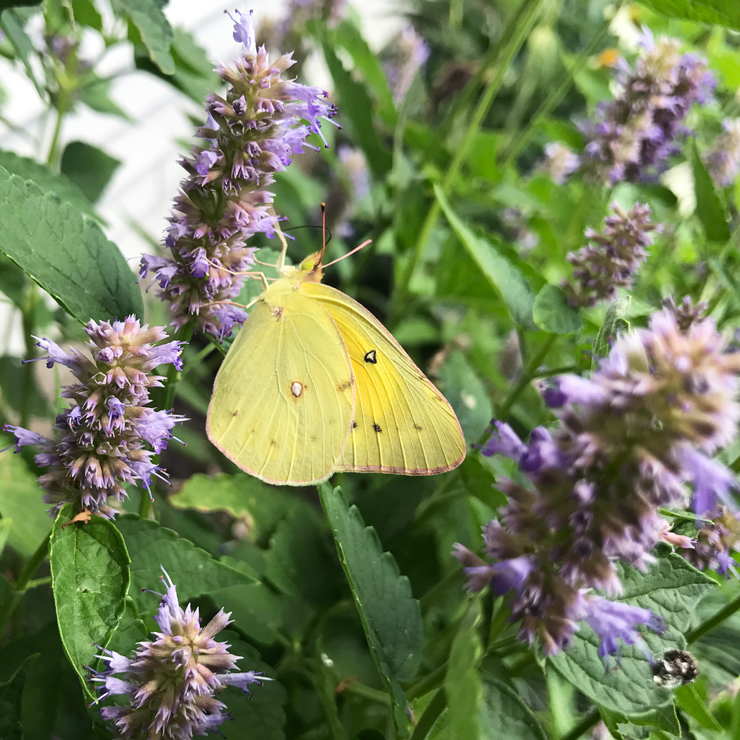


Nectar for Adult Butterflies
When we think about attracting butterflies, we immediately think of flowers. Blooms supply nutrient-rich nectar – a vital resource that butterflies head for in droves. Most butterflies visit a wide variety of flowers but their preferences aren’t all alike – some like tube-shaped flowers, others prefer shallower heads like those on sunflowers. So to invite the widest variety of butterfly visitors, it’s best to plant a broad selection of blooms with different styles, colors, and bloom times from spring through fall.
It’s also a good idea to plant each type of flower in a group rather than mix them all up – that way it’s easy for butterflies to find their favorites from a distance. And whenever possible, choose native blooms for your butterfly garden, which offer some of the most beneficial – yet hard to find – sources of nectar for our local species of butterflies.
Some of our favorite perennials for butterflies include:
• Agastache
• Aster
• Bee Balm
• Coneflower
• Coreopsis
• Joe pye weed
• Liatris
• Milkweed
• Rudbeckia
• Tall sedum
• Yarrow
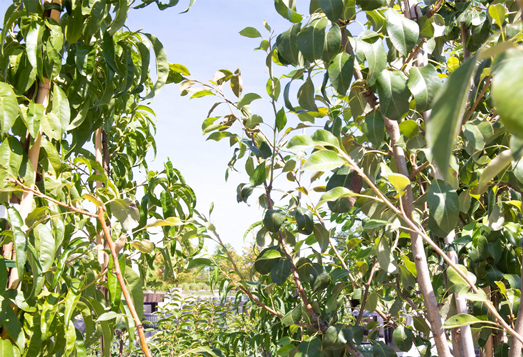
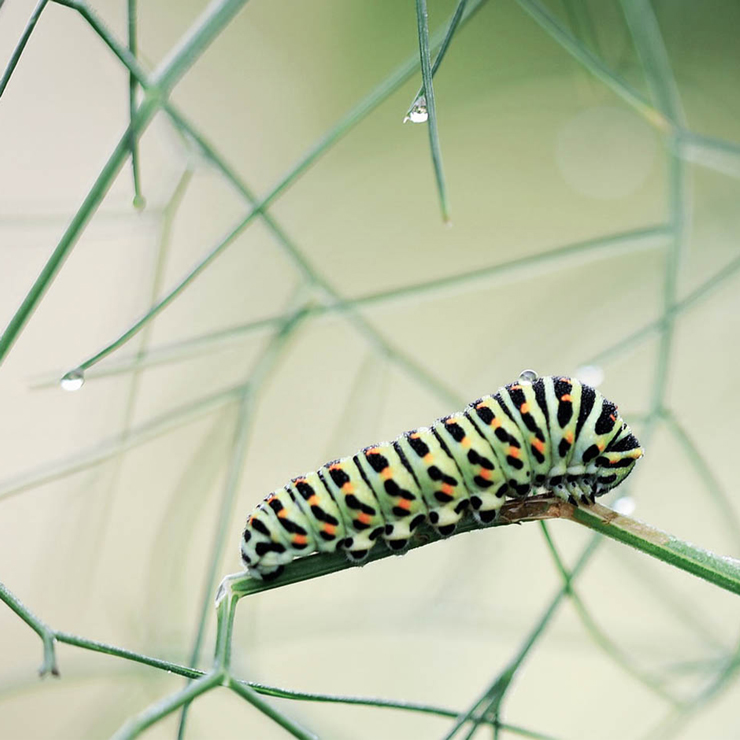
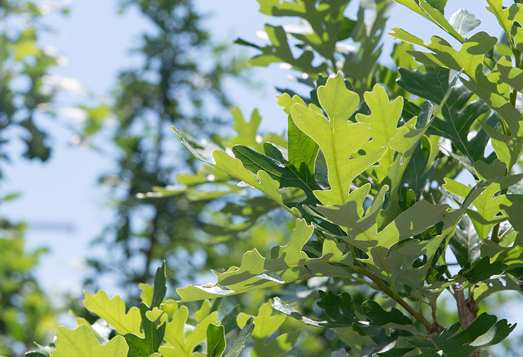
Host Plants for Caterpillars
Of course butterflies don’t appear out of nowhere. To have butterflies, we first have to have caterpillars. And caterpillars often have extremely specific needs, sometimes including just one or a very few species of plants to feed on. Without these suitable host plants, caterpillars – and therefore butterflies – simply can’t survive.
You might be familiar with the close relationship between monarch butterflies and milkweeds – plants in the genus Asclepias are the only hosts a monarch caterpillar can survive on. In another example, caterpillars of zebra swallowtails depend on a single host plant, common pawpaw, throughout much of their range.
But not all caterpillars are as particular as these two. Just like with nectar sources, the best strategy is to plant a diversity of perennials, shrubs, and trees as host plants for caterpillars – especially native species, which are much more likely to support native caterpillars. And be sure to include a few of those special requests for the picky eaters too.
Some of the best host plants to support a wide range of caterpillars include:
• Oak
• Black cherry
• Aspen
• Birch
Other examples of host plants include:
• Big bluestem, little bluestem, and switchgrass for skippers
• American elm for question mark butterflies
• Willow, black cherry, tulip poplar, and birch for tiger swallowtails
• Golden Alexander, fennel, dill, celery, and carrot for black swallowtails
• Baptisia for duskywings and eastern tailed blues
• Rose of Sharon for various types of hairstreaks
• Aspen, cottonwood, and poplar for viceroys
• Hollyhocks for painted lady butterflies
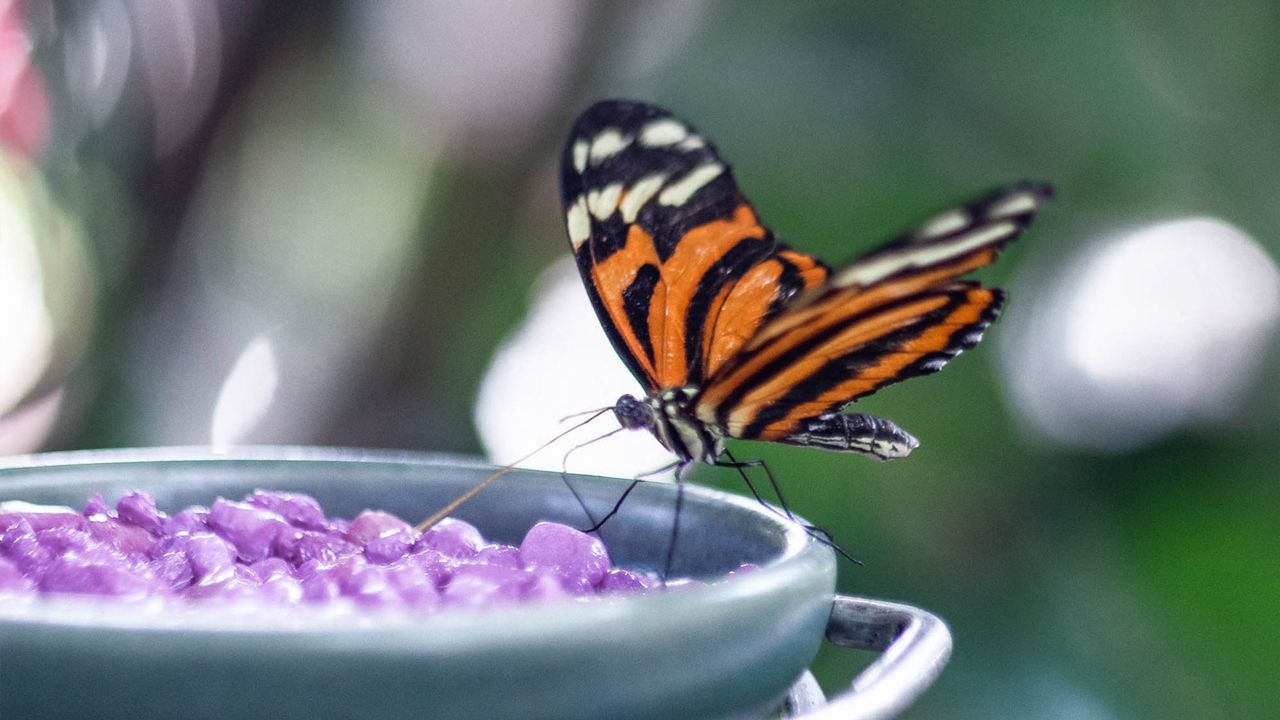
Water Sources
Like all living things, butterflies need water, and a reliable source of moisture will keep them hanging around your garden all summer long. Many butterflies also exhibit a behavior called mud puddling where they congregate around shallow puddles on the ground to sip up natural salts and amino acids in the water.
You can create a butterfly-friendly water source by filling a shallow tray with a layer of pebbles before adding water. The pebbles give butterflies and other pollinators a safe place to land while they sip. If you have a bird bath, you might place a few pebbles or rocks there too.
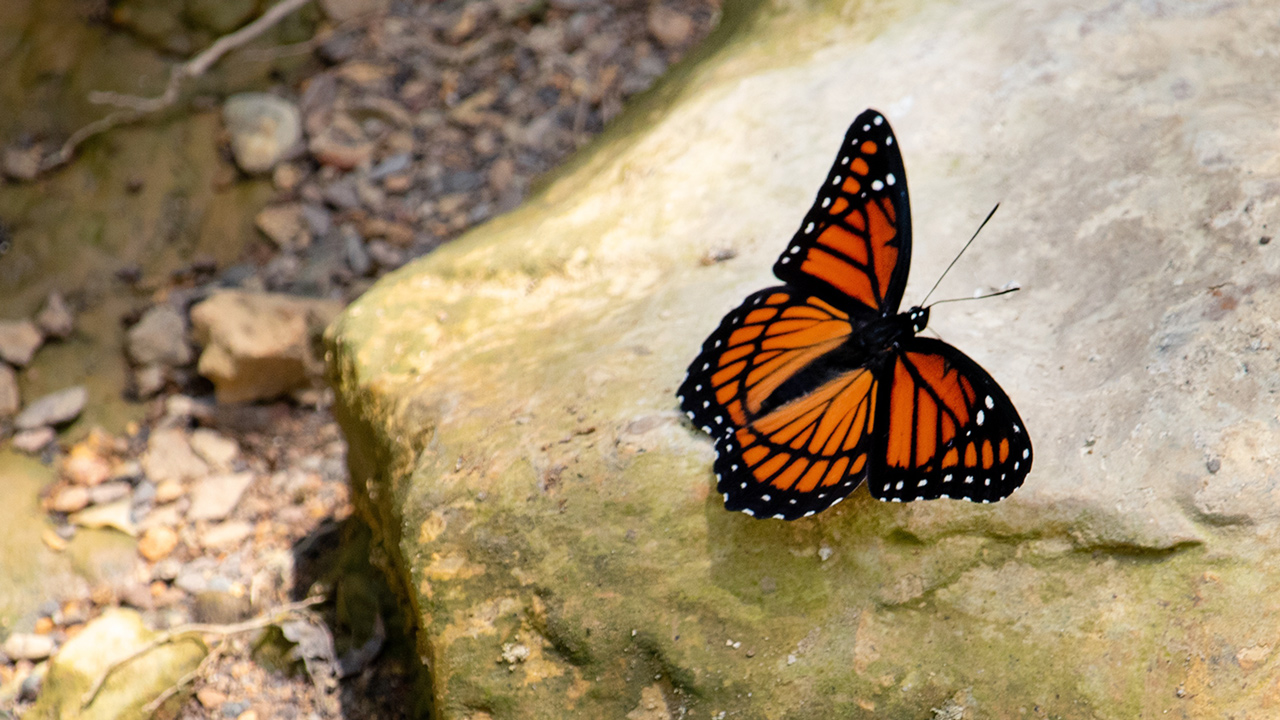
Other Helpful Tips
While nectar, host plants, and water are the three most critical components of a healthy butterfly garden, there are other resources your local butterflies will appreciate too.
• A place to warm up. On chilly mornings, butterflies often need a place to warm their wings before they begin their day. This behavior is called basking, and a flat stone in a sunny location is a perfect spot for it.
• Protection from wind. Fighting a stiff breeze saps a lot of energy from a butterfly, so if your home is in a windy spot, consider planting your butterfly garden on the protected side of a fence, building, or shrub border.
• Overwintering sites. The stems from spent perennial plants, leaf litter, and wood piles can serve as safe places for butterflies to overwinter. Consider putting off some of your garden cleanup until the weather warms up again in the spring.
• Freedom from pesticides. A thoughtful approach to pest management is a must for any healthy butterfly garden. To control unwanted insect pests, start with non-chemical techniques first, and if you must use a pesticide, try to choose the gentlest option – like an insecticidal soap. As much as possible, avoid spraying the blooms, and plan to spray in the late evening when butterflies are less likely to be feeding.
Welcome the Butterflies
Much of the satisfaction of growing a garden is knowing it supports our natural community of insects, birds, and other wildlife too. Need a few butterfly-friendly plants for your landscape or suggestions for what to plant? Just drop by the store or give us a call. We’re here to help.

